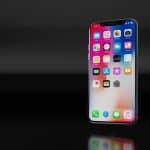The news is in – Apple has finally released three new phones, but the question is – which one should you buy?
Not only have they jumped straight from the iPhone 7S to the iPhone 8 but Apple has released the iPhone X to celebrate the 10th anniversary of the iPhone line. How do the two compare?
Design
The iPhone X – or iPhone 10 – is undoubtedly the most radical change in design we’ve seen throughout the device’s ten-year history. Other than the small top notch, almost the entire face is now taken up by the display, and the phone has thin bezels on either side. This futuristic design means that it looks nothing like its predecessors, something that will definitely attract many buyers.
The small top notch on the iPhone X includes both the front facing camera and a number of sensors that enable such things as Face ID. This comes in place of the iconic home button that allowed for Touch ID in earlier models. A Dot Projector, Infrared Camera and a Flood Illuminator allows the phone to build a 3D model of your face, even when it’s dark. The iPhone 8, however, still has Touch ID.
Both of the new phones are water-resistant with the same IP67 rating as before, and both will have glass backs – something that those who are prone to clumsiness may want to think very carefully about.
Performance
Although the keynote presentation last night didn’t go into much detail about the performance of the phones, we were informed about improved performance for both the CPU and GPU. Both phones are powered by the A11 Bionic chip which we assume is built using the same 10nm process as Snapdragon 835. Hopefully, this means a more efficient device that runs more smoothly and has better battery life.
Similarly, Apple did not mention the amount of RAM in either phone.
Display
Internally, they may be similar but display-wise the iPhone X, and the iPhone 8 are on different levels. The iPhone X is the first Apple iPhone to ditch an IPS LCD in favor of OLED. This offers more perfect blacks and more vivid colors than LCD displays and is Dolby Vision and HDR 10 capable offering a much higher resolution of 2436 x 1125 rather than 720p or 1080p.
If you opt for the iPhone 8 though you’ll be sticking with IPS LCD panels.
Camera
The rear camera on the iPhone X is similar to that on the iPhone 8 Plus – dual 12MP cameras with an extra sensor that acts as an optical telephoto zoom lens. On the other hand, the iPhone 8 will stick with one 12MP sensor. Additionally, the iPhone X will benefit from OIS on both sensors whereas the iPhone 8 Plus has it on just one. Another exclusive feature for the iPhone X is that its front-facing camera can achieve a similar effect to Portrait Mode on the back.
iOS
Both phones will come with iOS 11 installed, and this boasts new features such as improved Siri, a brand new Control Center and a redesigned App Store. Due to the fact the iPhone X no longer has a physical home button, it will include some iOS tweaks like the addition of a virtual home button.
Price
The 64GB iPhone 8 will start at $699 and the 256 GB model at $849. For the iPhone 8 Plus you can expect to add an extra $100 to each of those. The pricier iPhone X will start at $999 for 64GB and £1,149 for 256GB.









